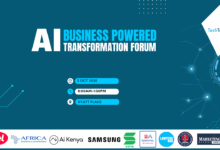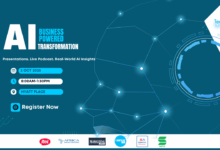
During a period that had seen accelerating AI breakthroughs, the Singapore AI Safety Blueprint represents an incursion for international cooperation towards frontier AI risks.
This Open Initiative was introduced in April 2025 at the International Conference on Learning Representations (ICLR) and presents a common research agenda covering such topics as safety, alignment, and control of powerful AI systems. However, for it to become a success, it faces a number of hurdles.
Singapore’s Middle-Power Diplomacy
The Singapore AI Safety Blueprint attempts to elevate the city-state as a neutral broker between global AI heavyweights.
Given the tensions that are mounting between the U.S. and China regarding technological supremacy, Singapore’s strategic diplomacy may very well be the rare platform that needs to facilitate dialogue between the two.
While Singapore’s neutrality is, indeed, an asset, these geopolitical tensions between the foremost AI players – and largely between the U.S. and China – could conceivably erode the will on all sides to cooperate meaningfully. That said, since relations between these nations have only intensified, with each party underlining the other in AI to enhance economic and military clout, it is difficult to envision cooperation being fostered at the expense of competition.
A Framework Without Teeth?
The ambitious tone of the Singapore AI Safety Blueprint notwithstanding, it remains unenforceable. It sets down three main priorities: risk assessment, safe model development, and controllability of advanced systems-without providing for an enforcement mechanism.
Critics state that the absence of a formal framework for enforcing international cooperation runs the risk of the blueprint becoming more symbolic than pragmatic.
Another argument is that the blueprint focuses too much on existential threats like superintelligence to the neglect of more immediate issues, such as algorithmic bias and disinformation, which may hamper the blueprint’s short-term applicability where real harm matters now.
Operational Initiatives Underway
Singapore is already implementing concrete efforts to reinforce the Singapore AI Safety Blueprint’s goals:
- The Global AI Assurance Pilot is working to test generative AI systems for safety vulnerabilities across use cases.
- A joint model evaluation was done with Japan to study AI behavior in 10 languages, with a focus on robustness and detection of harmful outputs.
- A red teaming challenge in the Asia-Pacific area gives valuable data to accommodate threat modeling from diverse cultural perspectives, an issue often dismissed under Western-oriented AI evaluation.
All these efforts underscore Singapore’s shift from consensus-building to execution. However, these initiatives do face challenges, including countries unilaterally seeking their own economic and military interests instead of the collective interest in AI safety.
Existential Risk vs. Present-Day Harms
The Singapore AI Safety Blueprint gives greater priority to the issue of existential risk, a concept gaining prominence among academics and policymakers who are concerned that AI, having surpassed human intelligence, acts outside their control. Critics maintain that this emphasis renders the more immediate existential risk issues of algorithmic bias, disinformation, surveilling practices, and labor disruptions. Thus, balancing long-term foresight with short-term accountability is vital to maintain public trust and regulatory credibility.
A Regionally Rooted Global Strategy
What identifies the Singapore AI Safety Blueprint, so to speak, is its endeavor to put Asian voices right into the center of AI global governance. While frameworks from the U.S. and Europe hog the headlines, red teaming and multilingual testing at the regional level in Singapore could, on one hand, really contribute to making global standards inclusive. That being said, Asia-centricism still might not truly worry about global inclusivity in those areas like Africa and Latin America, where the debate about the safety of AI is just as pressing but somehow seems to be excluded from the discussion.
Will the Blueprint Stick?
The test for the Singapore AI Safety Blueprint is whether it will yield real policy changes, transnational agreements, or joint safety standards. In a scenario where countries see AI as a tool for economic and military dominance, voluntary cooperation is a fragile mechanism. Although the blueprint has fostered a vital conversation, at the practical level, the blueprint is still bogged down by many obstacles.
Follow us on WhatsApp, Telegram, Twitter, and Facebook, or subscribe to our weekly newsletter to ensure you don’t miss out on any future updates. Send tips to editorial@techtrendsmedia.co.ke



